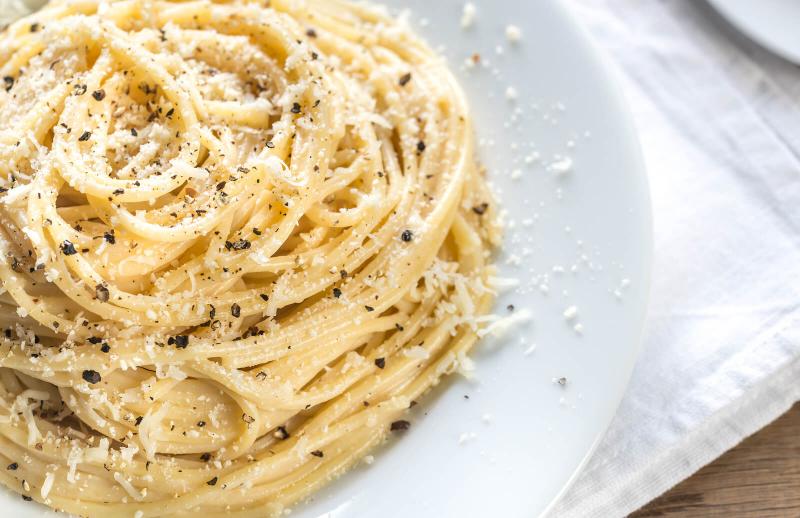Traditional Roman cuisine is based on rural and peasant food traditions, and, for this reason, they are often quite hearty (peasants had to work the fields, thus they needed lots of energy). The countryside around Rome is fertile and generous, and allows for the use of ingredients that are genuine and strictly seasonal.
You’d better put your diet on hold if you want to get acquainted with Roman cuisine - and be a bit adventurous too… Quinto quarto anyone?
Here’s a look at some of the most popular Roman dishes.
Pasta
The cornerstone of Roman cuisine is pasta. And here are the most famous sauces to go with.
Bucatini all’Amatriciana – a world-famous sauce originating from nearby Amatrice, amatriciana is made with guanciale (cured pork jowl), pecorino cheese, and peeled tomatoes, and requires bucatini pasta.
Pasta alla Gricia – before amatriciana, there was gricia. It was invented by the poor shepherds of the Lazio Apennines who, during their seasonal migrations, brought with them pecorino, guanciale and strutto (lard) to toss in the pasta. Basically, gricia today is amatriciana ‘in bianco’, i.e. without tomato sauce, which was only introduced at the end of the 18th century.
Spaghetti alla carbonara – a classic found everywhere in Italy, spaghetti alla carbonara hails from Rome, and like other Roman pasta dishes, is quite simple to make: it uses guanciale (sometimes substituted with pancetta, bacon), egg yolks, pecorino cheese and pepper. This mixture is combined with pasta immediately after pasta has been drained, but away from the heat.
Spaghetti cacio e pepe – this creamy sauce is obtained from grated pecorino romano DOP and black pepper mixed quickly with just-drained pasta and a spoonful of cooking water. Simple yet delicious.
Secondi
Saltimbocca alla Romana – this veal dish is one of the most famous of Roman cuisine. The recipe is made special by the addition of prosciutto crudo, sage leaves, butter and black pepper.
Coda alla vaccinara – not for everyone, but this is a classic of cucina romana povera (peasant cuisine). It’s made from oxtail, slowly cooked in a stew with celery, carrots and aromatic herbs. Coda alla vaccinara is considered the ‘queen of quinto quarto’.
Quinto quarto – this is the offal of butchered animals; it’s what remains after the finer parts of the animal are selected. It’s not a dish in itself, but it’s used in many recipes of Roman cuisine, for example trippa alla romana, pajata, coratella and testarelle.
Vegetables
Carciofi alla giudia or Carciofi alla romana – the most famous vegetable of Roman cuisine is no doubt the artichoke, but beware, if you want to eat them fresh, then stick to the months from February to May. The first version, Jewish-style artichokes, are deep-fried, while the Roman-style version is made with whole artichokes filled with minced garlic and parsley and cooked in olive oil.
Puntarelle – Puntarelle (chicory sprouts) salad is a typical and tasty side dish of Rome and surrounding region of Lazio. It’s made using anchovies, garlic, olive oil, vinegar, and of course puntarelle sprouts, which should be firm when you buy them at the market(puntarelle is a winter vegetable).
Dessert
Grattachecca – the Romans’ version of granita is a classic of street food. The funny name derives from the gesture by which, through a specific tool, ice is scraped (grattare in Italian) from a block; ghiaccio, in Roman dialect, is ‘checca’. The thin slice of ice scraped from the block is flavored with syrups and/or fruit juices, and, sometimes, even fresh or dried fruit pieces.
What’s your favorite Roman dish?







